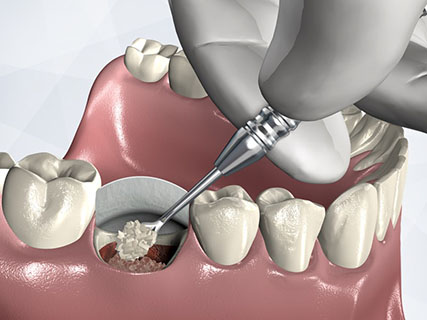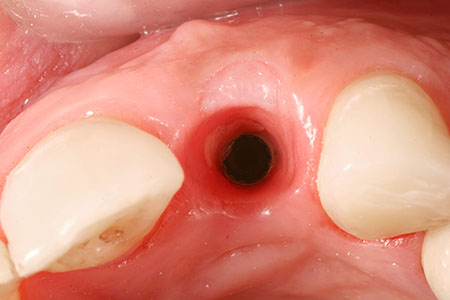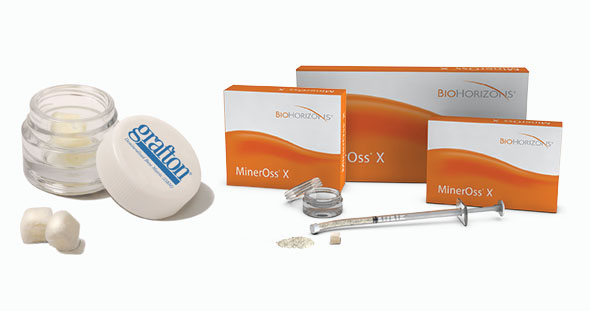St. Lawrence Dentistry performs dental bone grafting procedures to restore your bone to its previous form following tooth loss, gum disease, or trauma.

Bone grafting can also maintain your facial bone structure after tooth extraction. Many dental procedures, such as implant placement, require the jawbone to be as close to its original size and shape as possible for the optimal results. The jaw and other facial bone support your face and appearance. Sufficient facial bone can provide you an ideal foundation for treatment success.
During the body’s normal maintenance cycle, specialized cells continually remove damaged cells and replace them with new, healthy cells. Grafts provide a framework in areas of missing bone where these cells can start the rebuilding. Over time your cells will remodel the graft material into healthy, functioning bone.

Grafting material comes from several places. An Autograft is a bone taken from another part of your body and transplanted to the desired site. Autograft bone contains your cells and is an ideal grafting material. Potential concerns are that it requires a second surgical site, and there may not be enough available bone for the procedure. An allograft is a particulate bone donated by a tissue donor that is tested and processed to ensure safety and sterility. Allograft bone does not require a second surgical site and is readily available. Allograft bone is well documented in clinical studies and has an excellent safety record.
St. Lawrence Dentistry uses Grafton® DBM and MinerOss® allograft bone that is processed by Osteotech Inc., a leading supplier of allograft bone in the orthopedic and dental industry. Your doctor may use these products alone or in combination with other grafting materials.
Osteotech utilizes donor bone recovered by reputable non-profit tissue banks. Their processing follows strict regulations and guidelines as set by the American Association of Tissue Banks (AATB) and the U.S. Food and Drug Administration (FDA). It is widely used and conforms with Health Canada regulations.
The screening process for donor tissue is extensive. It undergoes rigorous testing for diseases and proprietary processing, which produces a consistently predictable graft material. Packaging of the graft material is in single-patient doses ready for implantation to help regenerate bone.
Dental socket preservation using particulate bone is a simple treatment that has enormous benefits. It can help rebuild a foundation for your smile and preserve your facial features. If you are interested in learning more about this beneficial service, please let us know.










